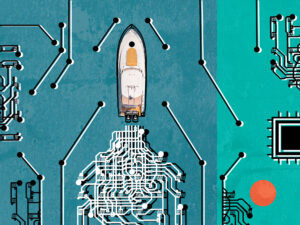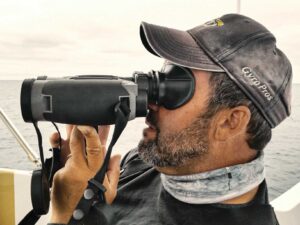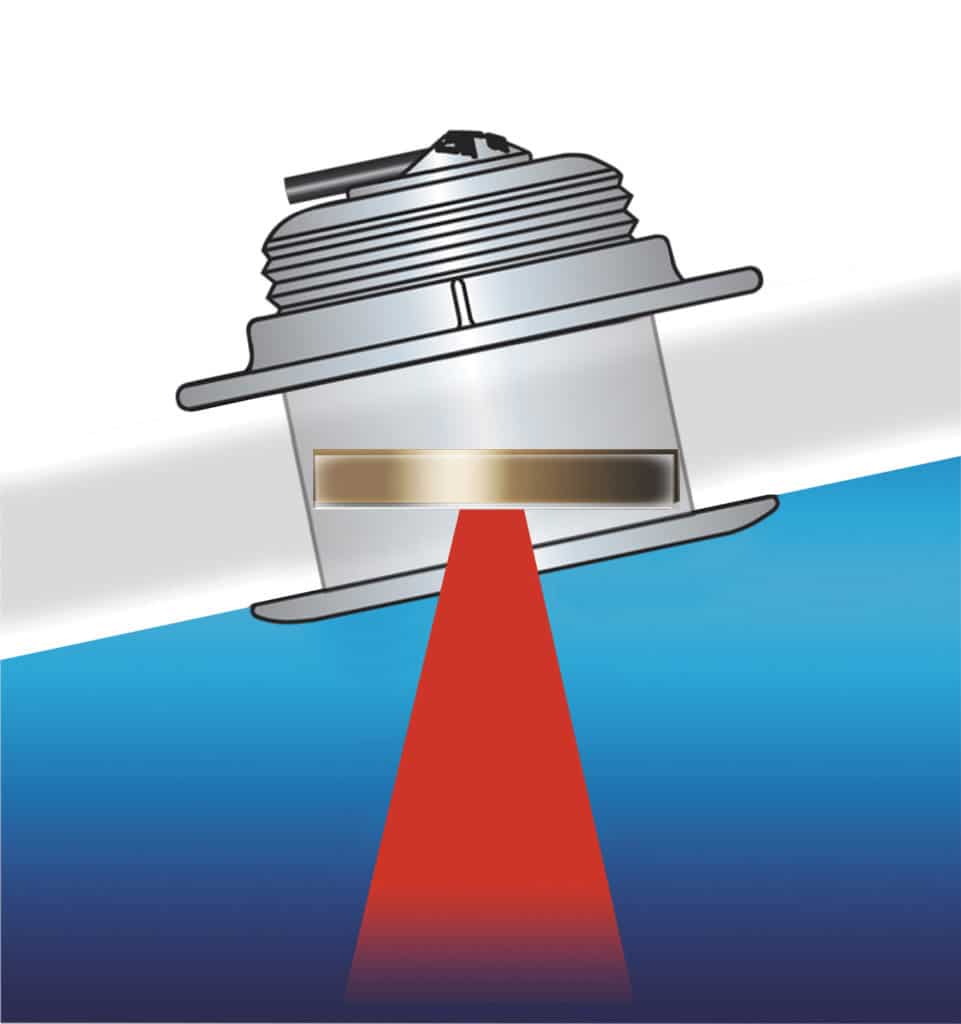
We were cruising at 17 knots some 22 miles off Cabo San Lucas, Mexico, when the sonar screen lit up with returns from a massive school of fish. “That’s tuna!” said Capt. Eduardo Gonzalez. As he pulled back the throttles, three crew members scrambled to grab rods and cast metal jigs. Seconds later, we were in the midst of a triple hookup on school-size yellowfin.
This is the way sonar should work: You see the fish, you catch the fish. Yet it’s not always so easy. Fast-moving game species, such as tuna and kingfish, as well as forage species, like squid, can be notoriously tough to detect on sonar, especially when the boat’s underway. What’s the secret to seeing these on sonar? Whether you have a CHIRP or conventional fish finder, the answer often lies in the transducer you choose, where you place it and how it is installed. No matter what type or brand of sonar you have aboard your boat, if you are serious about finding fish, there are truths about down-looking transducers you must consider.
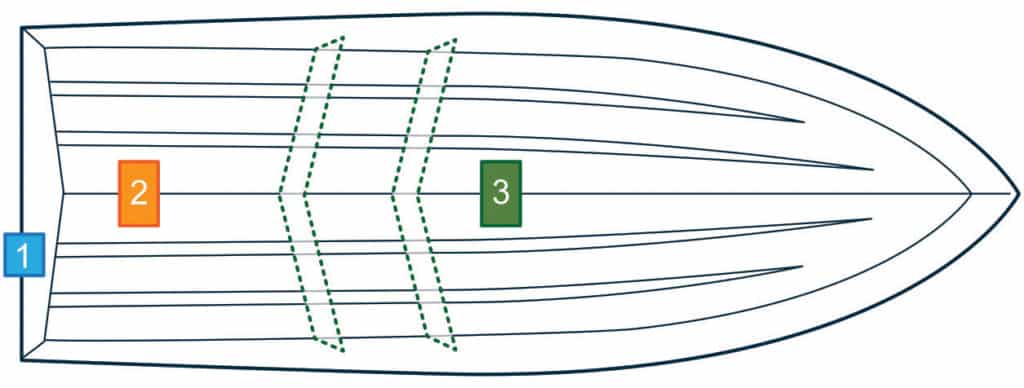
THINK IT THROUGH
There are three basic kinds of transducers: transom-mount, in-hull and through-hull. When it comes to down-looking sonar (as opposed to side-scanning sonar), forget the first two. Through-hull models are the choice of the more experienced captains.
A through-hull transducer has direct contact with the water, and that eliminates the signal loss you experience with an in-hull type. Because an in-hull transducer sends and receives sonar through a fiberglass hull, the signal degrades, impairing your fish finder’s ability to pick up details.
While a transom-mount transducer has direct contact with the water, it is more likely to be bathed in foam as water exits the stern and mixes with air while the boat is underway. “Aerated water interferes with a transducer’s ability to send or receive sonar signals,” says Peter Braffitt, general manager of Gemeco Marine Accessories, a distributor for Airmar Technology Corp., a leader in transducer development and manufacturing. “Clean water flow over the face of the transducer is critical to the proper operation of the system,” Braffitt adds.
A properly installed through-hull is more likely to stay in clean water than a transom-mount transducer, according to Braffitt. What’s more, through-hull ’ducers are available in larger sizes than transom-mount models. Why is that important? Read on.
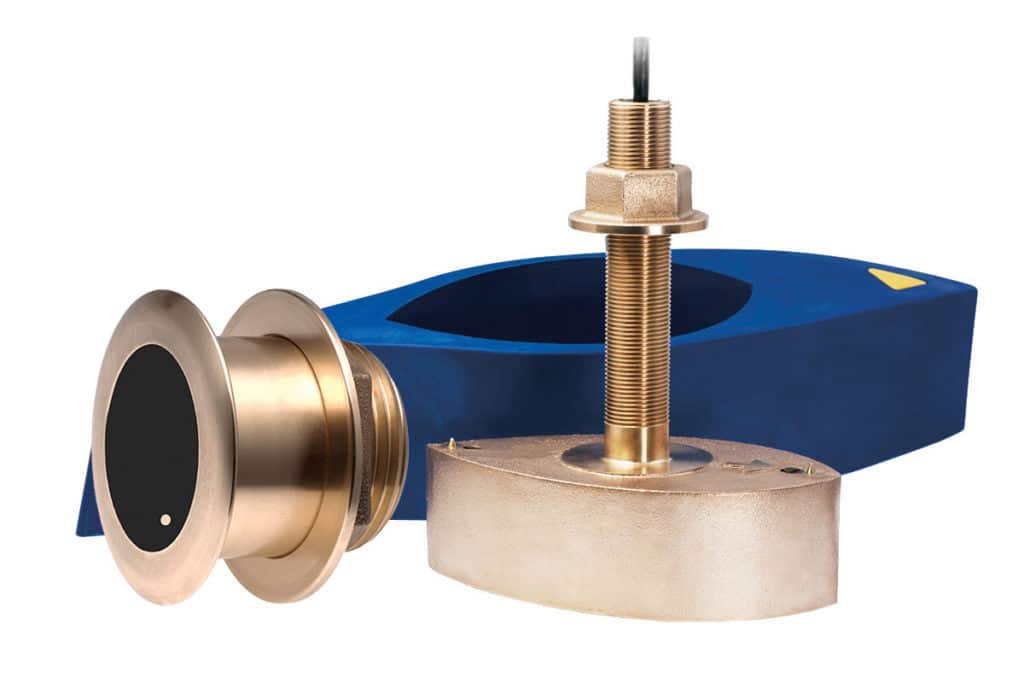
GO BIG
If you are serious about finding fish, such as tuna and kingfish, Braffitt says not to scrimp on size when it comes to choosing a transducer. Larger models feature bigger ceramic elements. Elements are what send and receive sonar signals. Simply put, as size increases, so does signal strength and sensitivity. “The larger the ceramic elements, the more energy a transducer produces and receives,” Braffitt explains. “As a result, you see more fish and see greater detail on the sonar screen.”
In years past, many boats under 30 feet could not readily accept large through-hulls because these transducers protruded too far below the hull, creating drag, adversely affecting handling, and interfering with trailer bunks. On planing hulls, such transducers had the effect of a trim tab, disconcertingly lifting one side of the boat while underway.
More recently, however, Airmar introduced large through-hull transducers for both CHIRP and conventional sonar systems that mount relatively flush with a boat’s running surface. Flush-mount, low-profile installations help to prevent damage to the transducer from it striking underwater objects. Big, low-profile transducers, such as the Airmar B175, are available in tilt versions that look straight down, even when installed on the angled surface of a V-hull.
“The invention of the flush-mount transducer has revolutionized sonar use for boats under 30 feet,” Braffitt says. “Boats as small as 16 feet can now run big through-hull transducers with no issues in handling or trailering.” A number of boatbuilders also incorporate pockets along the keel of their hulls to facilitate flush-mount installations of large transducers, such as the Airmar CM599LH-W or R109LH-W.
STEP AHEAD
An increasing number of saltwater fishing boats now feature step-hulls that usher a cushion of aerated water under the running surface to increase lift, boost efficiency and increase speed. Yet step-hulls have also created an issue that negatively affects transducers. When all that aerated water travels across the face of the transducer, it interferes with sonar signals, as discussed earlier.
The solution in this case is to install the through-hull farther forward than you would on a conventional V-hull (traditionally, through-hulls are positioned as far aft as possible). “On a step-hull, placing the transducer just in front of the steps, as close to the centerline as possible, helps keep it in clean water,” Braffitt says.
Because step-hulls tend to run relatively flat, the forward transducer location stays submerged most of the time. This allows the transducer to operate properly, even while the boat is running at high speed. In fact, the boat cited in the opening paragraph is a step-hull model — the new Mag Bay Yachts 33 — with an Airmar B164 through-hull, low-profile transducer for conventional 50/200 kHz sonar installed just forward of the front step.
LED DILEMMA
Another kind of interference comes from other electrical instruments. I recently installed LED navigation lights and discovered that my sonar was unreadable due to “hash” obliterating the screen. After I turned the lights off I realized the LEDs created radio frequency interference (RFI).
More separation between the wires for the lights and the transducer cable solved the problem.
Many marine LEDs are CE rated, shielded to prevent RFI. So if you retrofit your boat with LED lights, make sure they are CE rated. Should the fish-finder screen still suffer from interference, just separate the wires from the transducer cable.
For top fish-finder performance, choose the biggest and most powerful transducer, and ensure it’s installed in a manner that minimizes interference and maximizes sonar transmission and reception. Pay attention to these ’ducer details and you will find more fish.

